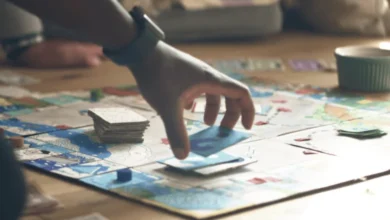How to Write A Song in 7 Simple Steps

Writing a song is easy. You just have to know what you want to say, write it down and rearrange it so it makes sense. Follow these seven simple steps and your next hit song will be ready for radio!
Step 1: Find a spark of inspiration
You’re probably already familiar with the idea of finding inspiration in your life, but how do you actually go about doing it? Well, there are a few simple steps that can help. First, take out your notebook or notebook app and write down anything that comes to mind when thinking about this new song idea. You don’t need to worry too much about grammar or spelling at this point–just get all those ideas out onto paper as quickly as possible! If there are certain words that keep popping up in your head while trying to come up with lyrics for an upcoming verse melody section (e.g., “free” might come up when writing about love), feel free to highlight those words so they stand out from everything else on page one before moving onto page two where we’ll start filling out our creative vision even further.
Step 2: Jot down your ideas
Next, you need to write down your ideas. This can be done in any number of ways:
- A notebook
- A computer or tablet
- Smartphone app like Evernote or OneNote (Android)
- Voice recorder (iOS)
If you’re using a traditional pen and paper, make sure you have enough room on the page so that your handwriting doesn’t get too cramped or messy. Also make sure it’s not too small to read later on! If this is something that concerns you, try writing in larger letters than usual so they’re easier for others–or even yourself–to decipher later on down the road when looking back over old notes from years past (and don’t forget about those yellow highlighters!).
Step 3: Build your creative vision
Now that you have an idea of what kind of song you want to write and have some musical ideas in mind, it’s time to start building your creative vision.
Listen to music that inspires you. This can be anything from classical music, jazz or blues (I personally love Stevie Ray Vaughn), right through to pop/rock/alternative artists like Coldplay or Muse. Whatever kind of style gets your creative juices flowing is fine; just make sure that the lyrics are something that speaks directly to your heart and soul so they can be transferred into your own songs later on!
Listen to music outside of your comfort zone. There’s nothing worse than being stuck in a rut where all the songs sound exactly like each other – this will lead only towards boredom and stagnation rather than creativity! So make sure there’s always something new in there too: try listening for example some classical Indian ragas from Bollywood movies; these often feature unusual rhythms which one might not normally associate with Western pop-style music but nevertheless contain elements which could inspire interesting ideas when applied elsewhere (such as using drone notes instead). Or even better yet – go out into nature where nothing but silence exists…but wait…what if we could find ways of transforming this silence into noise?
Step 4: Create a structure
The next step is to make sure your song has a clear structure. This means that each section of your song should be logical, easy to follow and consistent throughout, as well as engaging for listeners. If you’re not sure how to do this then look at some other popular songs in the same genre as yours (or even songs by other artists who work in different genres) and see how they do it!
Also Read: How to Improve Your Writing: Easy Methods to Write Better
Step 5: Fill out your arrangement
The next step is to fill out your arrangement. The arrangement of a song is the order in which the different parts of a song appear and how long they last, as well as how they relate to one another. For example, if you prefer arranging your chorus first and verse second, then arrange it that way!
There are many different types of arrangements but we will go over four here: chorus-verse-bridge-chorus (CVC), verse-chorus-(bridge)-verse-(chorus), bridge-(verse)-(chorus).
Step 6: Finish your song strong
If you get to the end of this process and you’ve written a song that sounds like garbage, don’t worry! Just start over again with another idea. You can always come back to it later if you want. The important thing is to make sure that when someone listens for the first time, they think “wow! This sounds like me!” or better yet: “This is so much fun and catchy that I can’t wait for more from this artist!”
Step 7: What if I get stuck?
In case you encounter a creative block and struggle to compose a song, attempt to discover a solution to overcome it. If that approach proves ineffective, seek alternative approaches to circumvent the obstacle. You might want to look into song writing courses to see if this helps you with your writing. If these methods fail and you feel completely stuck, don’t hesitate to ask for assistance.
When someone else has a clearer understanding of your thought process (which is often the case), it can be beneficial to allow them to lead the way in order to collectively produce outstanding songs!
Conclusion
Writing a song doesn’t have to be difficult. With these seven simple steps, you’ll be on your way to writing an amazing song in no time!






